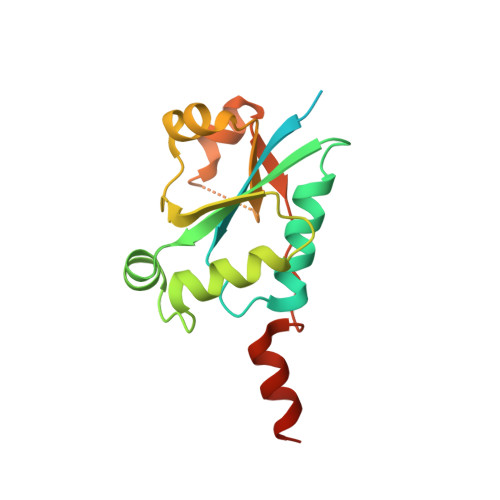Structural determinants of the catalytic mechanism of Plasmodium CCT, a key enzyme of malaria lipid biosynthesis.
Guca, E., Nagy, G.N., Hajdu, F., Marton, L., Izrael, R., Hoh, F., Yang, Y., Vial, H., Vertessy, B.G., Guichou, J.F., Cerdan, R.(2018) Sci Rep 8: 11215-11215
- PubMed: 30046154
- DOI: https://doi.org/10.1038/s41598-018-29500-9
- Primary Citation of Related Structures:
4ZCP, 4ZCQ, 4ZCR, 4ZCS, 4ZCT - PubMed Abstract:
The development of the malaria parasite, Plasmodium falciparum, in the human erythrocyte, relies on phospholipid metabolism to fulfil the massive need for membrane biogenesis. Phosphatidylcholine (PC) is the most abundant phospholipid in Plasmodium membranes. PC biosynthesis is mainly ensured by the de novo Kennedy pathway that is considered as an antimalarial drug target. The CTP:phosphocholine cytidylyltransferase (CCT) catalyses the rate-limiting step of the Kennedy pathway. Here we report a series of structural snapshots of the PfCCT catalytic domain in its free, substrate- and product-complexed states that demonstrate?the conformational changes during the catalytic mechanism. Structural data show the ligand-dependent conformational variations of a flexible lysine. Combined kinetic and ligand-binding analyses confirm the catalytic roles of this lysine and of two threonine residues of the helix ¦ÁE. Finally, we assessed the variations in active site residues between Plasmodium and mammalian CCT which could be exploited for future antimalarial drug design.
Organizational Affiliation:
Dynamique des Interactions Membranaires Normales et Pathologiques, UMR 5235, CNRS, Universit¨¦ de Montpellier, Montpellier, France.

















